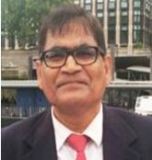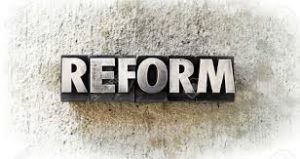 Prof. Satya Narayan Misra in Bhubaneswar, January 6, 2022: As Indian Republic trundles into its 72nd year, one is amazed by the unchanging character of our Constitution’s basic structure; a doctrine coined by the Supreme Court in Keshabananda Bharati case (1973).
Prof. Satya Narayan Misra in Bhubaneswar, January 6, 2022: As Indian Republic trundles into its 72nd year, one is amazed by the unchanging character of our Constitution’s basic structure; a doctrine coined by the Supreme Court in Keshabananda Bharati case (1973).
Be it the Congress or the BJP, they have implicitly agreed to retain the constitution’s core characters, like democracy, federalism, republicanism, secularism and independence of the judiciary. However, there are two areas of debate, viz supplanting parliamentary form of govt. with a presidential form and scrapping socialism from the script of the preamble.
The choice of parliamentary system was largely because of India’s familiarity with UK parliamentary system and experience of working with the Govt. of India Act 1935. However, there were prominent detractors like Dr. B.R. Ambedkar who was more in favour of presidential form of govt. Gandhiji wished for a system based on Village Panchayats rather than copy the British. He wrote “If India copies England, it is my firm conviction that she will be ruined”.
However, it was Pandit Nehru who tilted the balance for adopting parliamentary system. Dr Ambedkar in an astonishing address in 1953 had blurted: I am quite prepared today that I shall be the first person to burn the constitution’. Mr K M Munshi, a revered member of the constituent assembly also wrote “If I was to make a choice again, I would vote for the presidential form of govt. so that when the politician fails the country, at least one organ of the state is capable of tiding over the crises.
Much later Mr. R Venkat Raman as president had expressed grave doubts regarding the future of parliamentary democracy. He was alluding to the emergency years (1975-77) when there was mockery of collective responsibility. as the President was made to sign an order without the approval of the cabinet. As Granville Austin, the celebrated jurist observed “repression was piled upon repression and light seem to have gone out of India’s constitution”.
The suggestion for a Presidential form hinges on four arguments. Firstly, it enables the President to have a cabinet of outstanding professional competence and merit without the choice being restricted to the elected MPs. Secondly, since the cabinet members are not elected, they would not be motivated to adopt cheap populist measures. Thirdly, it permits cabinet ministers to be more involved in the job of governing the country instead of endless politicking.
Finally, it would discourage defection and horse trading in the event of a hung parliament. When Clement Attlee suggested the US president system as a model to the Indian leaders they rejected it. Atlee writes,” I had the feeling they thought I was offering margarine instead of butter”.
 After nearly 30 years of economic globalisation there is an all pervading feeling that in our Parliamentary form of governance, despite having brutal majority under PMs like Indira or Modi slogans like Garibi Hatao and Sab Ke Saath Sab ka Vikash have remained a hogwash. The biggest casualty has been poor delivery mechanism of basic services like quality primary education, affordable health care, proper sanitation for all and lack of accountability of the govt. in providing them. Malnutrition amongst children is rampant (43%).
After nearly 30 years of economic globalisation there is an all pervading feeling that in our Parliamentary form of governance, despite having brutal majority under PMs like Indira or Modi slogans like Garibi Hatao and Sab Ke Saath Sab ka Vikash have remained a hogwash. The biggest casualty has been poor delivery mechanism of basic services like quality primary education, affordable health care, proper sanitation for all and lack of accountability of the govt. in providing them. Malnutrition amongst children is rampant (43%).
Nearly half of the adolescent girls who will become future mothers are anaemic as per NFHS 5 report. This leads to high maternal mortality rates of 174 per lakh. The national nutrition mission to eliminate hunger, stunting amongst children has so far made no perceptible impact. India’s hope for a demographic dividend is turning in to a disaster.
In contrast, under the presidential form of govt. Franklin D Roosevelt ensured that USA comes out of the quagmire of economic depression through massive public investment & employment program of the New Deal. America which was languishing with around 28% unemployment in 1929 had achieved full employment and ensured a slew social protection measure like right to food, health and social security. America became the global hegemon by the end of the second world war.
Similarly, Lyndon B Johnson inked the great society programme which helped in reducing racial injustice and poverty significantly. FDR had the benefit of having as his cabinet colleagues reputed corporate leaders like Nelson Rockefeller who were called one-dollar men! Meritocracy rather than mediocracy was the leitmotif of governance.
It is apprehended that any move to convert India to a presidential form of govt. will offend the basic structure doctrine. This is debatable. There is no permanence to the constitution and it has to evolve over time. As Thomas Jefferson, the architect of the US constitution had once observed “No one generation can bind another. The creator has to make the earth for the living and not the dead”.
 In a similar vein Dr Ambedkar had also written that “the constitution is not merely a lawyer’s documents but a vehicle of life and a spirit should always be the spirit of age. In other words’ the constitution has to meet aspiration of all Indians and evolve accordingly. It’s therefore time to cogitate and dismantle the Nehruvian legacy of parliamentary democracy and put an alternative system which is based on merit over mediocrity, pragmatism over procedure and accountability over populism.
In a similar vein Dr Ambedkar had also written that “the constitution is not merely a lawyer’s documents but a vehicle of life and a spirit should always be the spirit of age. In other words’ the constitution has to meet aspiration of all Indians and evolve accordingly. It’s therefore time to cogitate and dismantle the Nehruvian legacy of parliamentary democracy and put an alternative system which is based on merit over mediocrity, pragmatism over procedure and accountability over populism.
The other issue which stirred a hornet’s nest is when K J Alphons, MP had moved a private members bill to delete the word socialism in the preamble of Indian constitution and replace it with equitable. It may be recalled in the Samantha Vs AP case, CJ Balakrishnan had clarified that socialism should not be interpreted in the narrow sense of a Communist but in a broad sense where the state undertakes all the welfare measures for the citizens. However, many believe that swearing allegiance to one ideology is a grave breach of liberty provisions.
Its indeed ironical that while the Preamble swears by socialism & socio economic justice for all, the economic construct of India after economic liberalisation is dictated by free market ideology, where the chasm of income inequality is ever widening as per the recent World Inequality Report! The precept & the practice is sharply at variance.



Leave a Reply
Be the First to Comment!